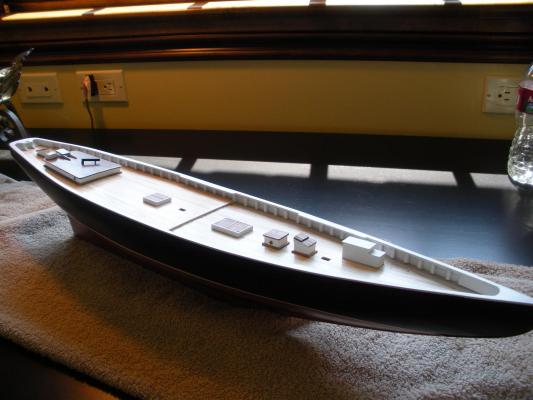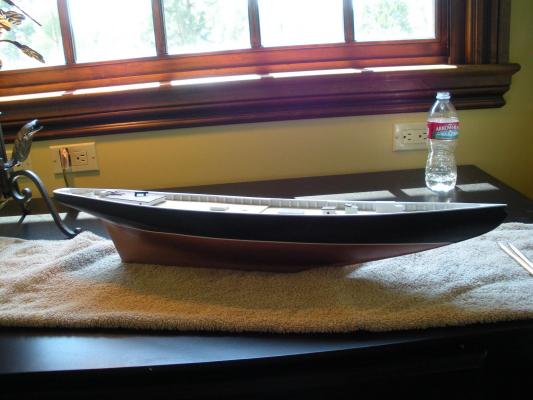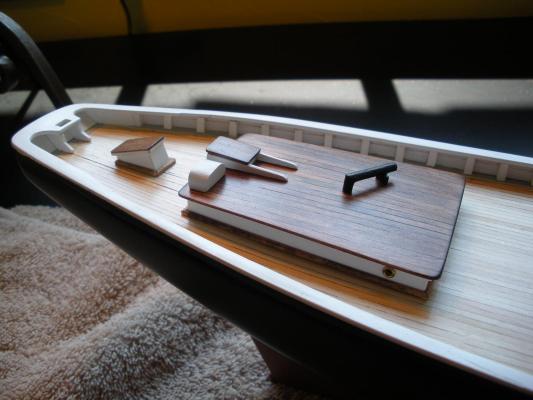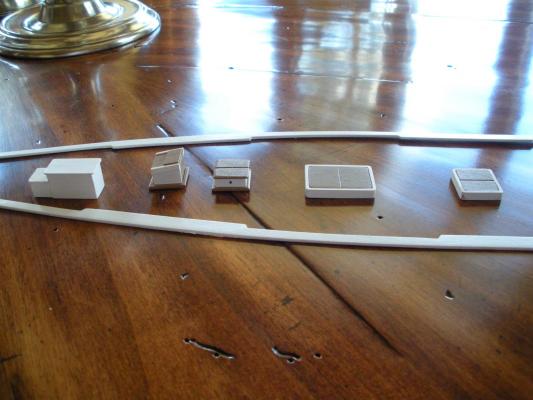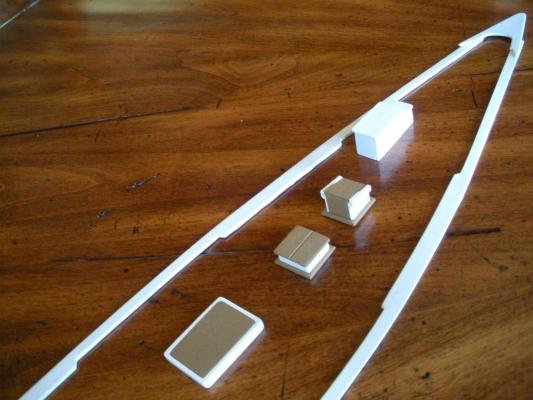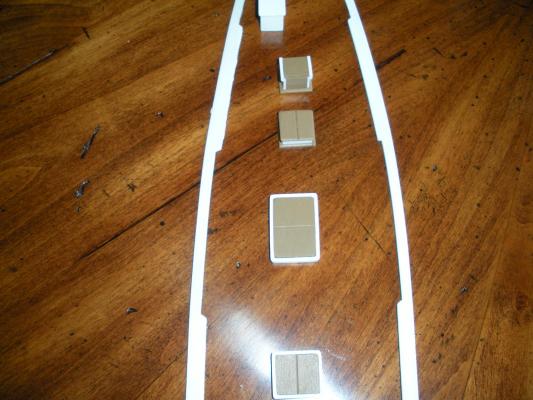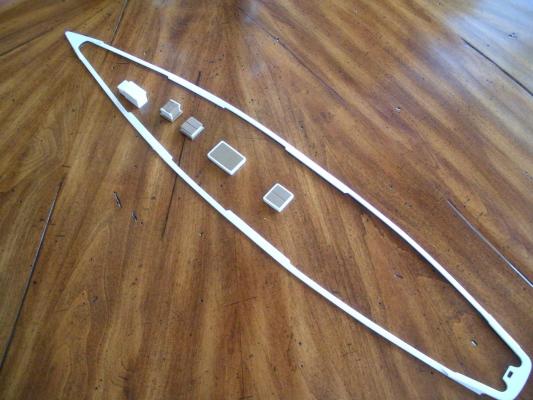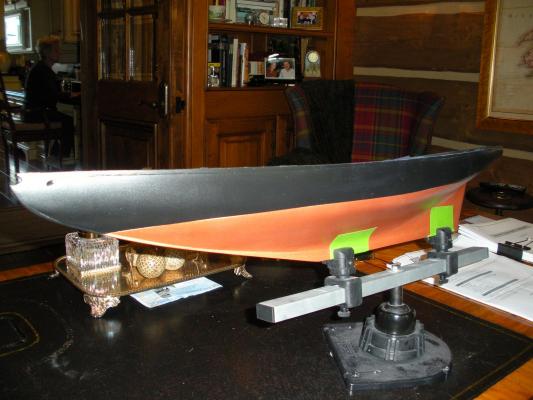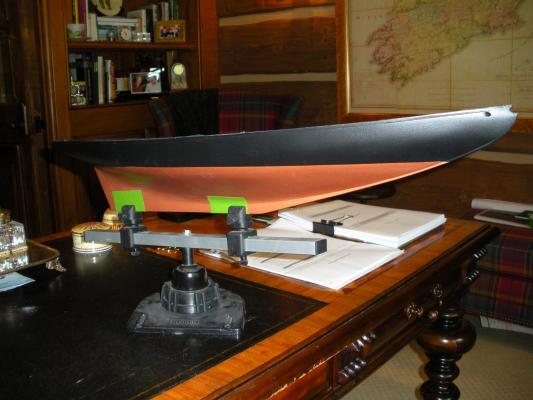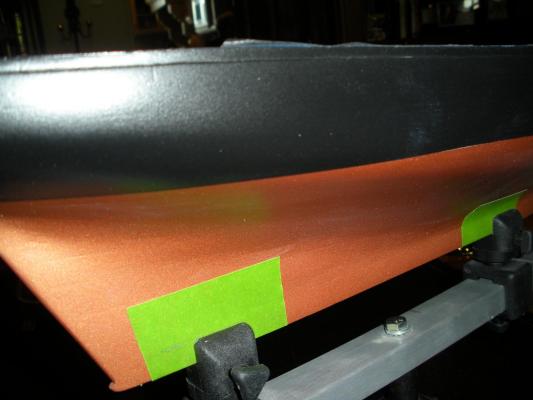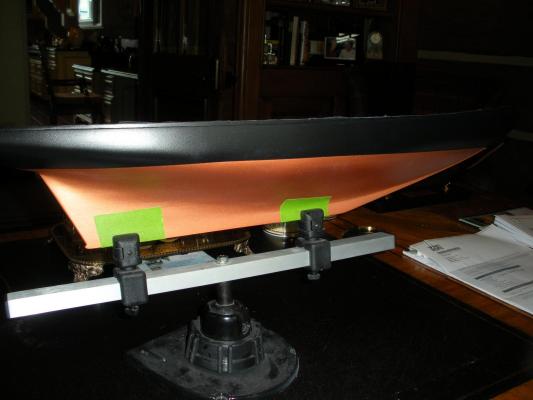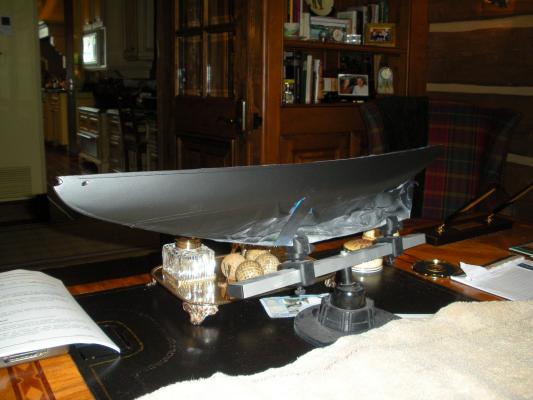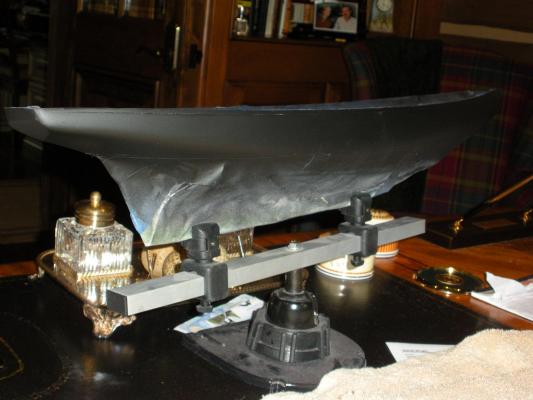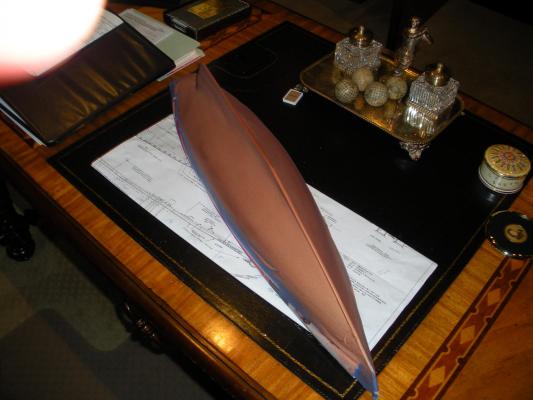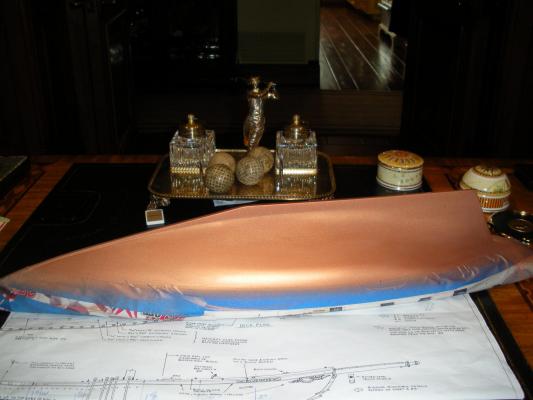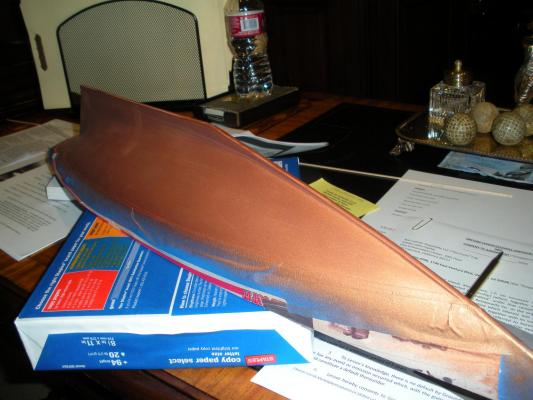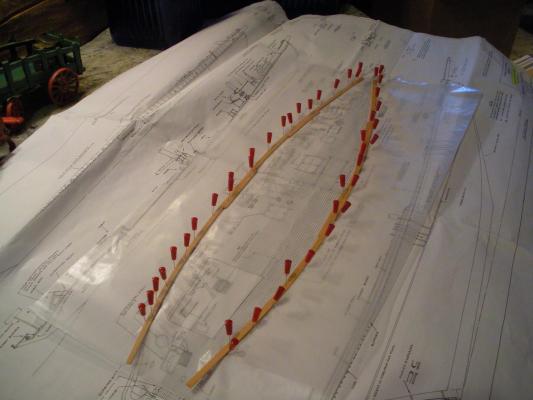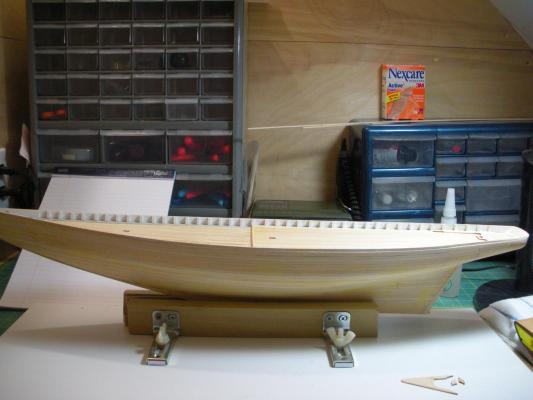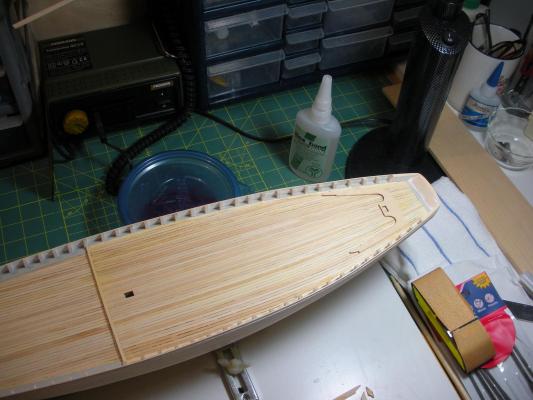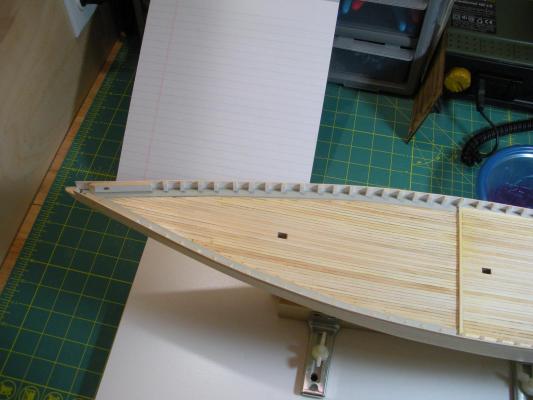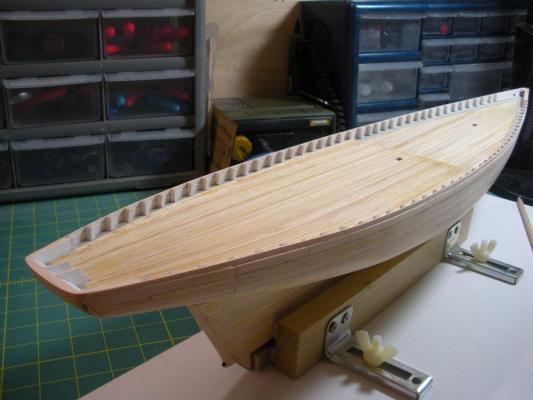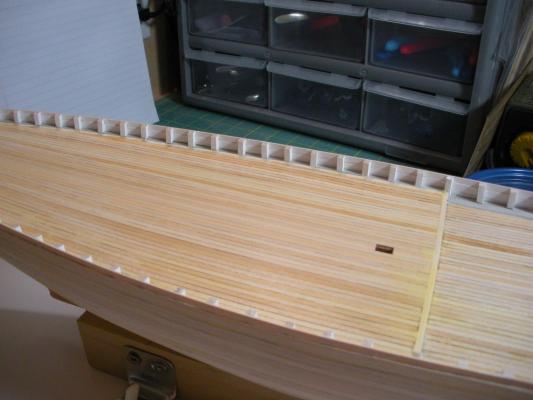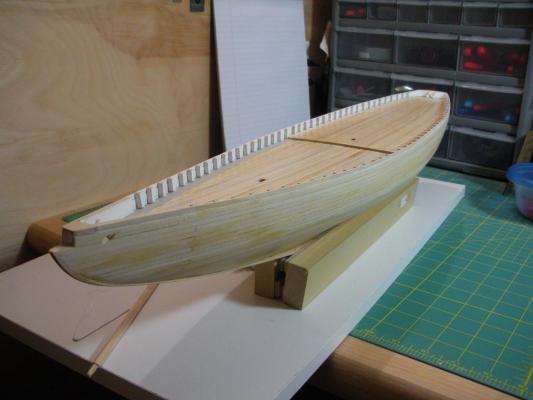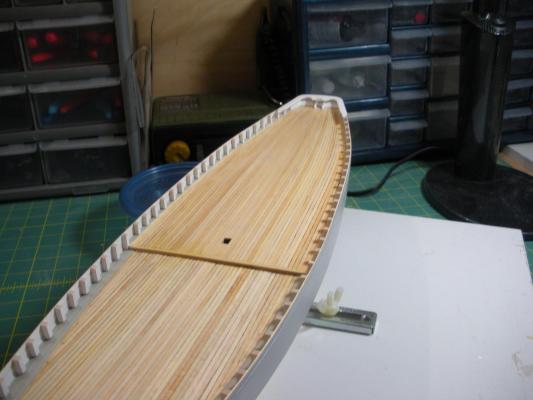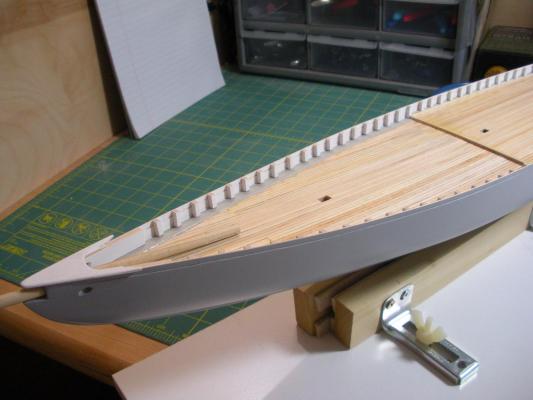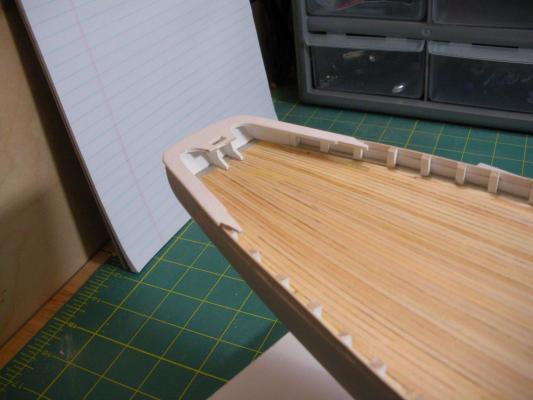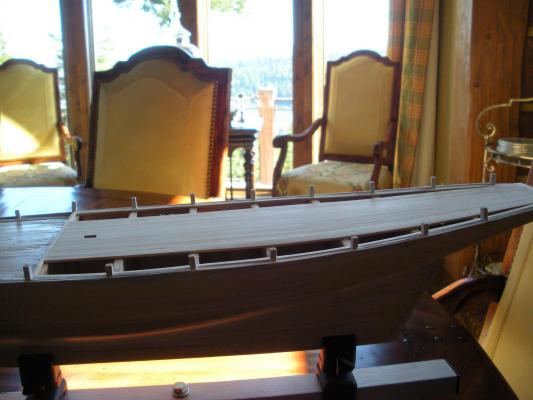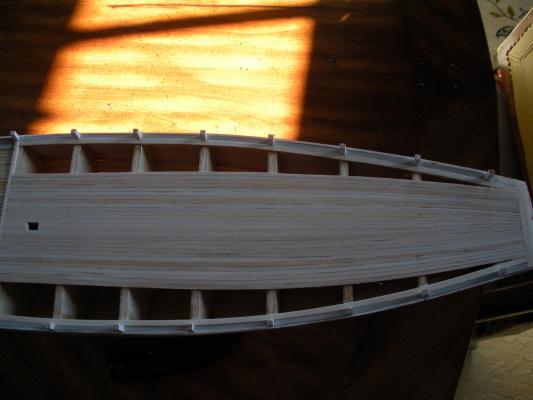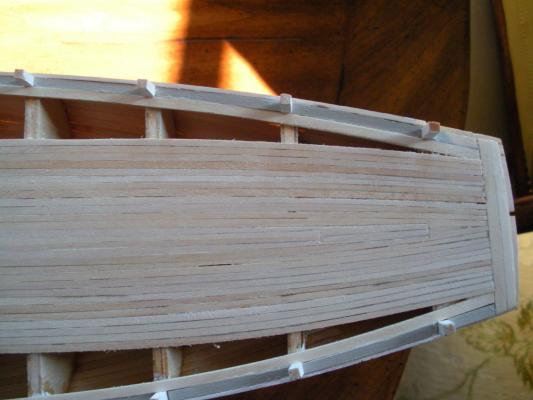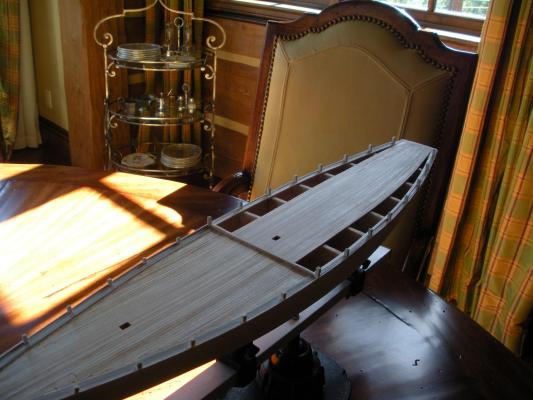-
Posts
38 -
Joined
-
Last visited
Content Type
Profiles
Forums
Gallery
Events
Everything posted by DWright
-
Sensational job on the aft deck Glenn. Even under the telling eye of the camera she looks perfect. Your whole log has been inspirational with great instructional hints. Thank you. Now it's time for me to get back to work. I've been AWOL too long. Darrel
- 382 replies
-
- Vanguard Models
- Duchess of Kingston
-
(and 1 more)
Tagged with:
-
Another Duchess! Initially I was reticent to post another Duchess of Kingston build log as four master craftsmen, in the form of JamesH, Bob Fine, and the two Glenns, have posted outstanding logs as of this date. Since we all approach modeling a little differently, and in an attempt to give this log some meaning, I will point out where I have departed from convention, if at all, and what successes or failures I may have encountered. As a youth, prior to the discovery of cars and young ladies, I modeled both ships and airplanes. I few years back I rekindled my enthusiasm for modeling, and absolutely appreciate this forum no end as it buoys the enthusiasm and provides so many very helpful tips and instructions. Since I'm late to the party I will be posting pictures of the hull frame with completed fairing, and ready for bulwark installation. The first thing I noticed about Chris Watton's unique design is that the modeler does not have to worry about making sure each bulkhead is true, square and aligned. This all important task is take care of by virtue of the of the longitudinal stringer that run the length of the hull. I felt I was constructing a bridge designed by German engineers with so many components designed to keep me on the straight and narrow. Secondly, you will note, from the pictures, that I was perhaps a bit over zealous when fairing the structure, having created some rounding on a couple of bulkheads. On my previous two attempts I didn't fair adequately and had to deal with minor hollows. Not this time! Now to the photos:
-
Okay fellas I'm in. I'll take photos tomorrow and begin to write about my experiences. I truly love the ship we are all working on and dearly want to "bring it home" as close to James' creation as my meager skills will allow. I do have another question. Since my youth, this is the third ship model I've endeavoured. The first two I used CA glue almost exclusively. After the horrors of CA I now have switched to PVA, and a bit more patient attitude. However, I plan on using CA on the bulkheads, planking pinned or clamped after correct bevel and bend, and then judiciously "brush" on PVA between the planks before the first plank sanding. It's an experiment that I'm seeking comments from the far more experienced. Also, as an unscientific survey where do each of you use CA verses PVA on ship model construction? Lastly, I wish to thank all of you for the encouragement and guidance. Modeling is similar to my former passion, golf. It's an individual skill and effort made so much more enjoyable by the camaraderie of your mates, even when the "needle" is out. Cheers to all, Darrel
- 382 replies
-
- Vanguard Models
- Duchess of Kingston
-
(and 1 more)
Tagged with:
-
Glenn, this is turning out to be a wonderful tutorial! I'm at fairing stage and have already used several of your tips & suggestions. The second planking is going to be beautiful. Did you have to use any stealers in the aft section of the first planking? So far my only troubling area was installing the false main deck. I dislike having to "manhandle" ply wood under high pressure up against fragile supports. I considered cutting the deck in half after dry fitting, and chipping the ply when extracting it. I also broke off the port side stanchion #3. Not a big deal. Carry on with your superb work, Darrel P.S.: I've elected to not start a build log as we now have four, and I didn't want to clutter it up with another.
- 382 replies
-
- Vanguard Models
- Duchess of Kingston
-
(and 1 more)
Tagged with:
-
It looks terrific Glenn. I not only appreciate the tips and tricks you mention, but also the time log you're keeping. It give a relative magnitude to the phase of construction at hand. I received my Duchess Wednesday, and all of your insight will be most helpful. Darrel
- 382 replies
-
- Vanguard Models
- Duchess of Kingston
-
(and 1 more)
Tagged with:
-
Thanks so much Glenn. It's a real tutorial. I lost partial use of my right hand about nine months ago due to a nerve impingement, and am looking for easier ways to rig a ship. I have plenty of grip, but no ability to open my hand, so using scissors in the right hand is impossible, and seizing is so time consuming and tedious. I have printed out most of Derek's "lesson" and will be using it very soon. I too bought the quad hands, and it will be a real benefit. Again, thank you, Darrel
- 382 replies
-
- Vanguard Models
- Duchess of Kingston
-
(and 1 more)
Tagged with:
-
Glad to see the quick and complete recovery from the slight laps. At almost 80 I have them all too frequently! Glenn, do you happen to have a reference to Derek's rigging techniques? I'd like to review them. Darrel
- 382 replies
-
- Vanguard Models
- Duchess of Kingston
-
(and 1 more)
Tagged with:
-
It looks terrific Glenn! As I await the arrival of my kit I have read James' log twice and your log at least twice. The detailed information you have noted is invaluable, and truly underscores the value of a good build log. I do have a question. I have always removed the laser char, particularly on bulkheads where planking will occur, to assure complete bonding of the planks. Do you, or anyone else, feel this practice is necessary with this kit? Thank you, Darrel
- 382 replies
-
- Vanguard Models
- Duchess of Kingston
-
(and 1 more)
Tagged with:
-
I'm in on this build log too Glenn. I just ordered the kit last week, and am anxiously awaiting its arrival. Cheers, Darrel Wright
- 382 replies
-
- Vanguard Models
- Duchess of Kingston
-
(and 1 more)
Tagged with:
-
Thanks gentlemen for the kind words and encouragement! I can truly say.....without this forum and the encouraging words and advice from people who know what they're doing I might have put this thing down. Knowing that the accomplished modelers here often rebuild an item several time before satisfied, has spurred me to remake parts (as many as five times) until it just "looks right". One of the attributes I keep pushing on is to be neater, cleaner & crisper with each new sub-assembly. This week, while in Seattle, Floyd Kershner showed me some various milled hardwoods he had purchased from a fellow in Ohio. Man, were these "sticks" true and crisp! It would be a delight to model in boxwood, and other hardwoods, to achieve this level of precision. Meanwhile, I have a ways to go before I can put this one in a case! Thanks again. Darrel
-
I haven’t affixed these pieces to the deck yet. However, after I complete the monkey and buffalo rails I’ll glue down these items along with the skylight, windless and miscellaneous hardware. I’ll post again when all of the above is complete. Cheers, Darrel P.S. Motored over to Seattle this weekend and spent a delightful three or four hours with Floyd Kershner and a couple other members of the Puget Sound Ship Modelers club.
-
Log #8, July 21, 2014 The hull is finally complete save the Buffalo & Monkey rails! In my last post I showed a photo of some of the deck furniture laid out in a tentative configuration between the two rails on a table. The pieces I had made were constructed, as suggested in Bob Hunt’s practicum, with painted single sheet hatch covers and roofs. Actually, they looked quite nice, but I wanted a little more authenticity and contrast, so I remade the structures with stained planked roofs & hatch covers.
-
Floyd, You're absolutely correct. I did depart from the norm with the copper paint. I happened to notice on Franks Mastini's book, Ship Modeling Simplified, that the Bluenose on the cover was painted in copper below the W/L. I liked it so I copied it. You're also right about falling in love with north Atlantic fishing schooners. I read, with great interest, Elia's log on the Arethusa, a "knockabout" schooner, and also a top flight scratch built effort. It would be wonderful to have that sort of talent, but I think I'll stay in double "A" ball for a while and hone my skills. I would, however, like to model the Blue Jacket's, 1/4 scale, Yacht America. They claim it's an "advanced" model, I think because it's POF and an Admiralty model. Anyway, the 19th and 20th century sail powered fish boats have great hull designs and I've take an interest in this genre. I think Dave's suggestion, along with Geoff's comments about securing the rails, makes a lot of sense. I gave it a dry run, setting the nose piece with the tiny reveal and using masking tape to secure the rails in the proper place. I think I'll use carpenters glue instead of CA as that will give me time to fuss with the alignment. Is the next meeting of the PSSM going to be on the third Saturday in July? And will it be at your home? I'll make sure I make this one. Also, Per and I have exchanged contact info, and we'll try to get together. Darrel
-
Thanks guys. After looking over Elia's Arethusa I'm humbled by your comments! That's what I aspire to. I have leagues to go. Dave, your suggestion made the light go on. The little nose piece is easy to set, and from there just work it back to the stern piece. The only two joints I would have to cut on the boat are the ones joining the stern piece with the main rail. One question: How does one hold the rails in place while the glue sets? I'v seen rubber bands around the hull in various pictures, and I assume they were holding the rails. With a 1/32" reveal on the outside line of the rail, getting the rail accurately secured ought to be loads of fun! Darrel
-
While waiting for paint to dry I began to construct the deck furniture. Additionally, I prepared the main rail for installation. I am somewhat apprehensive about installing the rails. I would like to make the scarf joint cuts off the ship and then install, however, when installing the rails I will be required to maintain a 1/32" reveal around the entire ship. The only way I can think of doing this is to install the bow piece and stern piece first and then cut and install the two main rails. I assume this is the proper procedure, but an suggestions or comments how to best do this would be greatly appreciated.
-
The next four pictures show the hull painting complete absent the waterline. Somewhere on this forum I read of a modeler using 1/16" Chartpak tape for his waterline. After applying the tape he then shot the hull with two coats of satin clear. I plan on using this handy hint. I have a roll of the Chartpak product and have purchased a roll of 1/16" matte finish flexible tape from Filmtool. I will see which one works best and make the application.
-
Log #7, June 29, 2014 I apologize for the long hiatus, but I got interrupted by a business trip, and an airbrush malaise. After much frustration with air brushing I finally broke down and bought a good quality airbrush and compressor (Iwata). Lesson learned. If you’re going to buy tools, buy the best you can afford. Or save until you can buy the best. After much frustration, drips, runs and assorted airbrush and painting disasters, the hull is within rails and a waterline of being complete. I have attached photos showing the painting of the lower hull in dark copper. Once I made peace with the little airbrush it was actually quite easy and comfortable. There is a learning curve so be prepared if you decide to use the tool/appliance. I probable lost about 10 day in this self imposed "class" on hull painting. I shot about six very light coats of copper, and once the last coat had cured for 24 hours I masked off and sprayed the upper hull black.
-
Nils, Thank you for the kind words. We just returned from Germany where we attended a wedding in Bad Wimpfen. 14 years ago we had a German foreign exchange student come live with us, in Santa Barbara, California, for a year. His name is Nils Fischer! We have since become lifelong friends with the whole Fischer family. I will continue to post comments and pictures, and I look forward to any comments you may wish to make. Darrel Wright
-
Thanks gentlemen. The words of encouragement mean a lot. Well, I embarked on the first coat of paint for the bottom hull yesterday with my new air brush. In the You Tube videos air brushing looks like a great way to apply paint and rather simple. I elected to use a dark copper acrylic (Tamiya) paint thinned quite a bit. After an hour or more of fussing with the damned air brush I finally got a coat on, but I'd much rather just bought a can of good quality spray paint and gotten on with it! It looks just fine (I'll post pictures with captions, thanks to Jay, later), but the learning curve is a little steep. I finally yelled "uncle" and called my daughter who has taught art at the secondary level. She explained all variables involved in air brushing, and further explained that I was using a tricky paint with suspended solids floating around in it that further complicated the procedure. Next time a six dollar can of spray paint will do just fine. Darrel
-
Bluenose Log #6 Next up was the completion of the transom and the installation of the last two strikes that form the bulwark. As mentioned before, I had trouble fully understanding both the kit instruction and what Bob Hunt was trying to convey regarding the configuration of the transom. Someone else had the same confusion. I pondered this for a while and eventually studied the plans and concluded, incorrectly, that the transom made a turn up to create a cockpit of sorts. About a day later I woke up at 2 AM and realized this rather bonehead error. I mistook the monkey rail for the upturn in the transom. I’ve been reading construction plans for 50 years, you’d think this would have been child’s play. I then spent the next two days agonizing over a another “remodel”, and rationalized my decision to leave it along by saying to myself; If Bob Hunt can modify the bow with an uncalled for block, who am I to tear my boat apart again. I’ve chalked it up to poetic license and a beginner’s goof. Once I recovered from the transom fiasco I began on the 1/32” X 1/8” strake to complete the bulwark. The port side went on with little aggravation. The starboard side, for some reason, would not meet the previous plank, and in many cases left a small gap. Unlike the other hull planks, a gap at this location, because of the cove effect (this plank was half the thickness of the previous plank), presented a ticklish problem of how to fill the gaps and not lose the desired sharp line of the cove. To accomplish the filling of the gaps I used a #10 pointed scalpel and some Elmer’s wood filler to “stuff the holes”. A look at the attached photos reveals this effort was partially successful. The gaps got filled, but the crispness of the line was, in some areas, compromised. Another rookie mistake! Since my last post much has transpired. The decks got completed, transom (after a fashion), bulwarks, and bow were finished, and the hull has been primed and sanded three time in preparation for painting. I have attached some more pictures that reflect this work. Darrel
-
Bluenose Log #5. Sorry for the extended gap in my build log. We’ve been on holiday, with a wedding in Germany and a visit to the Holland, Belgium and Normandy. Now back to work! Prior to decking the quarter deck I ran into a slight dilemma. The bulkhead extensions on the quarter deck had seen better days. Some were gone and others were mere shadow of their former self. I pondered for two days about how I could remove the stanchions and replace them with new 1/8 inch bulkhead extensions. I really had no choice. I removed all of the stanchions at the top of the bulkheads. Obviously you can’t just glue stanchions back on without some additional support. I reasoned that if I installed the waterway planks spaced exactly 1/8 of an inch apart and just resting on the bulkhead I might have a chance of creating enough glue area and support when I lock the stanchions in with the nibbing strike. To my surprise it worked! I aligned them correctly to accept the last two outside hull planks (Bulwark). I’ve bumped them several times during the aft deck planking effort and none has given way. I know this is almost a cardinal sin, but I got away with one. The aft deck planking was somewhat more complicated due to the requirement to taper each plank in order to accommodate the deck taper to the stern. I started out trying to carve the taper into the plank. The small scale of the planking strips made it almost impossible to maintain a consistent taper. I resorted to lining out the taper in pencil from the midpoint at the plank end up about six inches. I then used a single edge razor blade to chop off the excess to form a consistent and true taper. I edged each tapered plank with a soft lead pencil, but some of the simulated plank calking didn’t show up very well after much scarping and sanding. Below you can see the decking effort about half way to completion.
About us
Modelshipworld - Advancing Ship Modeling through Research
SSL Secured
Your security is important for us so this Website is SSL-Secured
NRG Mailing Address
Nautical Research Guild
237 South Lincoln Street
Westmont IL, 60559-1917
Model Ship World ® and the MSW logo are Registered Trademarks, and belong to the Nautical Research Guild (United States Patent and Trademark Office: No. 6,929,264 & No. 6,929,274, registered Dec. 20, 2022)
Helpful Links
About the NRG
If you enjoy building ship models that are historically accurate as well as beautiful, then The Nautical Research Guild (NRG) is just right for you.
The Guild is a non-profit educational organization whose mission is to “Advance Ship Modeling Through Research”. We provide support to our members in their efforts to raise the quality of their model ships.
The Nautical Research Guild has published our world-renowned quarterly magazine, The Nautical Research Journal, since 1955. The pages of the Journal are full of articles by accomplished ship modelers who show you how they create those exquisite details on their models, and by maritime historians who show you the correct details to build. The Journal is available in both print and digital editions. Go to the NRG web site (www.thenrg.org) to download a complimentary digital copy of the Journal. The NRG also publishes plan sets, books and compilations of back issues of the Journal and the former Ships in Scale and Model Ship Builder magazines.





